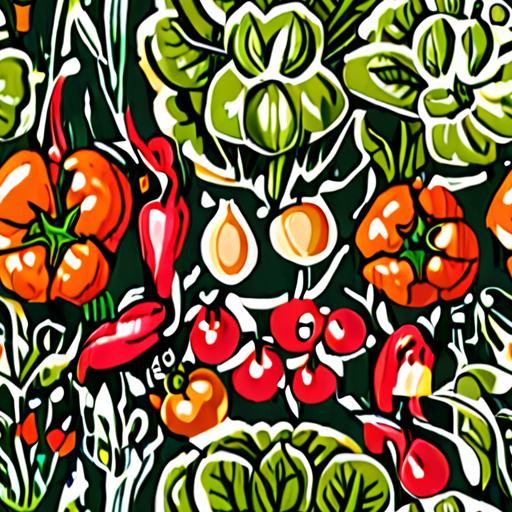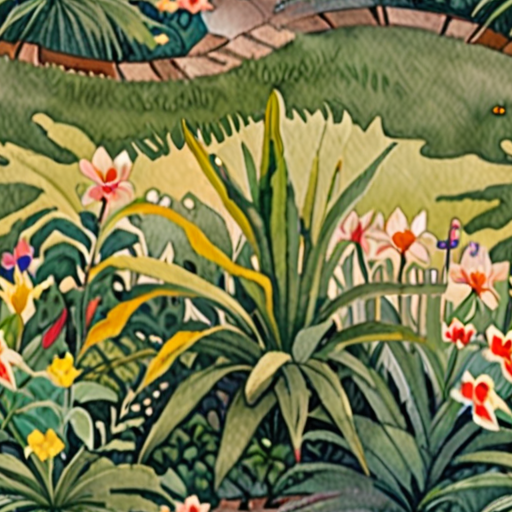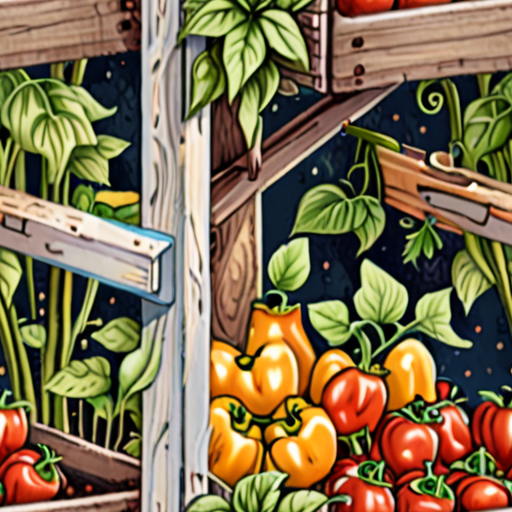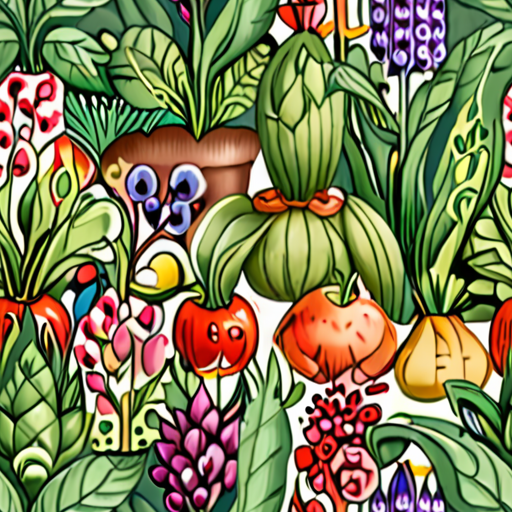For centuries, heirloom crops have been a cornerstone of sustainable agriculture, providing unique flavors, textures, and aromas that have captivated food enthusiasts worldwide. However, the rise of industrial agriculture has led to a significant decline in the production of these precious crops, leaving many wondering why farmers stopped cultivating them in the first place.
Why Farmers Stopped Producing Heirloom Foods
As a gardener and advocate for sustainable agriculture, I’ve often wondered why farmers stopped producing heirloom foods.
- The shift towards commercial agriculture and large-scale farming operations led to a decline in heirloom food production.
- Heirloom varieties often require more labor and maintenance compared to hybrid or genetically modified crops, making them less appealing to industrial farmers.
- The emphasis on high-yielding, disease-resistant crops has resulted in a loss of genetic diversity and the decline of heirloom varieties.
- Many heirloom seeds have been lost due to a lack of documentation and preservation efforts, making it difficult for farmers to access and grow these unique varieties.
- The rise of monoculture farming practices has contributed to the decline of heirloom food production, as farmers focus on growing a single crop on a large scale rather than diversifying their crops.
However, there is a growing interest in heirloom foods and sustainable agriculture, driven by consumers who value the unique flavors, textures, and nutritional benefits of these crops.
As a result, many small-scale farmers and gardeners are working to preserve and promote heirloom varieties, recognizing the importance of preserving genetic diversity and promoting sustainable agriculture practices.
By supporting local farmers and choosing heirloom produce, we can help revitalize the production of these unique and valuable crops.
Do Heirloom Plants Come Back Every Year?
As an heirloom gardener, I’m often asked whether heirloom plants come back every year.
- Heirloom plants are known for their unique characteristics and traits, which are preserved through saving and replanting seeds from previous harvests.
- This process allows heirloom varieties to reproduce with the same qualities as the parent plant, making them a great choice for gardeners who want to preserve traditional varieties.
The Benefits of Saving Seeds
Saving seeds from heirloom plants is a simple yet effective way to ensure that these varieties continue to thrive.
- By saving seeds, you can preserve the genetic material of your favorite heirloom varieties and pass them down to future generations.
- This approach also promotes biodiversity and reduces reliance on commercial seed suppliers.
How to Save Seeds from Heirloom Plants
Saving seeds from heirloom plants requires careful attention to detail and a bit of patience.
- Allow the plants to mature and produce seeds, then carefully collect and dry the seeds.
- Store the seeds in a cool, dry place until you’re ready to plant them again.
Tips for Successful Seed Saving
To ensure successful seed saving, follow these tips:
- Choose healthy, disease-free plants to save seeds from.
- Keep accurate records of your seed-saving efforts, including the variety, date, and location.
- Experiment with different seed-saving techniques to find what works best for you.
Conclusion
Heirloom plants offer a unique opportunity for gardeners to connect with the past and preserve traditional varieties for future generations.
By saving seeds from heirloom plants, you can ensure that these varieties continue to thrive and evolve over time.
Are Heirloom Vegetables Harder to Grow?
While heirloom vegetables haven’t been bred to be disease-resistant like some modern hybrids, they’ve lasted for as long as they have because they’re an excellent choice for almost any garden.
- The main reason heirloom vegetables aren’t as hardy as hybrid varieties is due to their open-pollination process, which allows them to adapt to local conditions and environments.
- This adaptability makes heirloom vegetables more suitable for small-scale, organic gardens and those who want to preserve traditional growing methods.
Main Challenges of Growing Heirloom Vegetables
- Disease Susceptibility: Heirloom vegetables can be more susceptible to diseases due to their lack of genetic diversity and resistance traits.
- Pest Attraction: Some heirloom varieties may attract pests more easily due to their unique flavors and aromas.
- Weather Sensitivity: Heirloom vegetables can be more sensitive to extreme weather conditions, such as temperature fluctuations and drought.
Tips for Successfully Growing Heirloom Vegetables
- Select Disease-Resistant Varieties: Choose heirloom varieties that are known to be resistant to common diseases in your area.
- Implement Integrated Pest Management: Use a combination of techniques, such as crop rotation, companion planting, and physical barriers, to manage pest populations.
- Provide Optimal Growing Conditions: Ensure your soil is rich in nutrients, and provide adequate water and sunlight for your heirloom vegetables.
Conclusion is Not Necessary
Can You Only Save Seeds from Heirloom Plants?
When it comes to saving seeds from your garden, many people assume that you can only save seeds from heirloom plants.
- However, this isn’t entirely true.
- You can save seeds from hybrid plants too, but there are some limitations.
Saving Seeds from Hybrid Plants
Hybrid plants are bred for specific traits, such as disease resistance or improved yields.
While you can save seeds from hybrid plants, the resulting offspring may not exhibit the same desirable traits.
This is because hybrid plants often have complex genetic makeup, making it difficult to predict how the seeds will turn out.
Why Saving Seeds from Hybrid Plants Can Be Challenging
One reason why saving seeds from hybrid plants can be challenging is that they often don’t come true from seed.
This means that even if you save seeds from a hybrid plant, the resulting offspring may not look or behave like the parent plant.
This can lead to disappointment and frustration, especially if you’re trying to preserve a specific variety or trait.
What About Open-Pollinated Varieties?
Open-pollinated varieties, on the other hand, are bred to come true from seed.
This means that if you save seeds from an open-pollinated variety, the resulting offspring should exhibit the same desirable traits as the parent plant.
Heirloom varieties are a type of open-pollinated variety, which is why they’re often preferred for saving seeds.
Conclusion
In summary, while you can save seeds from hybrid plants, it’s generally recommended to save seeds from heirloom or open-pollinated varieties.
This ensures that the resulting offspring will exhibit the same desirable traits as the parent plant.
With a little patience and practice, you can successfully save seeds from your garden and enjoy the benefits of homegrown, heirloom produce.
Why Can’t Farmers Replant Seeds?
As a gardener and advocate for sustainable agriculture, I understand the importance of preserving heirloom seeds and promoting environmentally friendly practices.
- Inbreeding Depression
- Certain Plants Not Growing True to Seed
- Pest or Disease Damage
When farmers don’t properly sanitize their seeds, it can lead to significant pest or disease damage when the saved seed is planted. This is because seeds can harbor diseases and pests that can spread quickly through a crop, causing widespread damage and reducing yields.
Another reason farmers often don’t save seeds is due to inbreeding depression. Inbreeding occurs when seeds are saved from a small population of plants, which can lead to a loss of genetic diversity. This can result in weaker, less resilient crops that are more susceptible to disease and pests.
Some plants simply don’t grow true to seed, meaning that the offspring may not retain the desirable traits of the parent plant. This can be due to various factors, including hybridization, cross-pollination, or genetic mutations.
At Old Seed , we believe in promoting sustainable agriculture practices and preserving heirloom seeds for future generations. By understanding the challenges associated with seed saving, we can work towards developing better solutions and promoting environmentally friendly gardening techniques.
For those interested in learning more about heirloom gardening and sustainable agriculture, I recommend checking out Heirloom Gardener magazine, which offers valuable insights and tips on how to get started with these practices.
Additionally, Seed Library is a great resource for finding and sharing heirloom seeds, as well as learning more about seed saving and preservation techniques.
By working together, we can promote sustainable agriculture practices and preserve our planet’s biodiversity for years to come.
Should I Freeze My Heirloom Seeds?
As an heirloom gardener, preserving your seeds for future seasons is crucial to maintaining the integrity of these unique varieties.
- Freezing seeds is a viable option for long-term storage, but it requires careful consideration of factors such as seed type, moisture levels, and storage conditions.
- Heirloom seeds, in particular, benefit from freezing due to their delicate nature and susceptibility to degradation over time.
Factors to Consider Before Freezing Heirloom Seeds
- Seed Type: Not all seeds are created equal, and some may not respond well to freezing temperatures. Research the specific needs of your heirloom variety to determine its suitability for freezing.
- Moisture Levels: Excess moisture can lead to mold and rot, compromising the viability of your seeds. Proper drying and packaging techniques are essential before storing seeds in the freezer.
- Storage Conditions: Airtight containers, low humidity, and consistent temperatures between -10°C and -20°C (-14°F and -4°F) are ideal for long-term seed storage.
Benefits of Freezing Heirloom Seeds
- Preservation of Genetic Integrity: Freezing helps maintain the genetic characteristics of heirloom seeds, ensuring their continued uniqueness and diversity.
- Extended Shelf Life: Frozen seeds can remain viable for several years, allowing you to enjoy your favorite varieties for generations to come.
Alternatives to Freezing Heirloom Seeds
- Drying: Air-drying or desiccant-based methods can effectively preserve seeds for shorter periods, making them suitable for smaller-scale storage or emergency situations.
- Cool Storage: Storing seeds in a cool, dry place, away from direct sunlight and heat sources, can also extend their shelf life.
Conclusion
Freezing heirloom seeds offers numerous benefits, including preservation of genetic integrity and extended shelf life. However, careful consideration of seed type, moisture levels, and storage conditions is necessary to ensure successful freezing. By understanding the factors involved and exploring alternative storage options, you can confidently preserve your heirloom seeds for future generations.





0 Comments